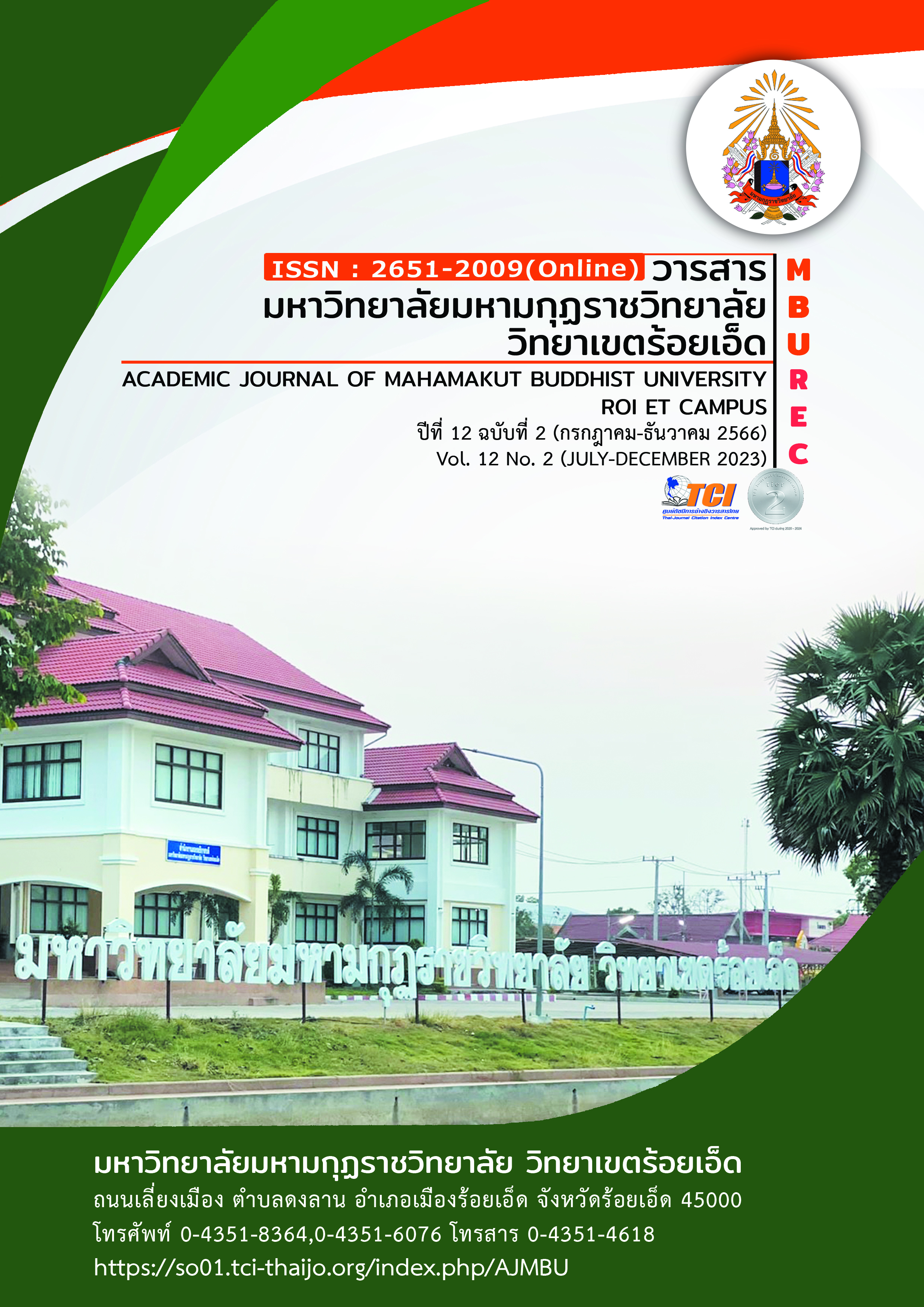DEVELOPING ENGLISH SPEAKING SKILL FOR ACADEMIC PRESENTATION BASED ON GENRE BASED APPROACH FOR UNDER GRADUATE STUDENTS
Main Article Content
Abstract
The objective is to develop a new teaching method for effective genre-based approach in speaking English skills of undergraduate students. The sample groups were 60 undergraduate students collecting data from pre-test and post-test scores. The data were analyzed by percentage, mean, standard deviation and t-test independent sample.
The findings were most of the students were 43 female or 70 percent and 18 male students or 30 percent. Most of the students, age between 20 and 24 years old, with 22 of 24 years old or 40 percent and had a GPA between 2.00-3.40, with the mode GPA 2.50 of 26 people, or 43.40 percent. A genre-based approach was applied to the students, it was found that post-test scores were increased from the pre-test in all aspects: behavior, fluency, grammar and vocabulary, organization. The test results showed a statistically significant increase and the teaching style of English according to the general-based approach consisted of 5 steps: 1) Selection of types of speech 2) Organizing language directory Vocabulary in each category, 3) making connections, making sentences, 4) speaking practice with body language, and 5) academic presentations.
Article Details

This work is licensed under a Creative Commons Attribution-NonCommercial-NoDerivatives 4.0 International License.
References
กระทรวงศึกษาธิการ. (2551). หลักสูตรแกนกลาง พ.ศ. 2550. กรุงเทพมหานคร : สำนักพิมพ์คุรุสภา.
ช่อทิพ วิริยะ. (2555). การเพิ่มความสามารถในการใช้ภาษาอังกฤษโดยการสอนภาษาแบบเน้นภาระงาน เป็นหลัก: เตรียมความพร้อมของนักศึกษาธรรมศาสตร์ให้พร้อมเข้าสู่ประชาคมเศรษฐกิจ อาเซียน. ปทุมธานี : สถาบันภาษามหาวิทยาลัยธรรมศาสตร์.
สงวนศรี โทรอค. (2547). การเปรียบเทียบความเข้าใจในการอ่านและเจตคติในการเรียนวิชา ภาษาอังกฤษของนักเรียนชั้นมัธยมศึกษาปีที่ 1 ที่ได้รับการสอนด้วยวิธีการสอนตาม แนวทฤษฎีการสอนภาษาแบบอรรถฐานกับการสอนแบบเดิม. ดุษฎีนิพนธ์ปรัชญาดุษฎีบัณฑิตสาขาการสอนภาษาอังกฤษ. อิดิธโคแวน : ออสเตรเลีย.
สุมิตรา อังวัฒนกุล. (2540). วิธีสอนภาษาอังกฤษ. พิมพ์ครั้งที่ 4. กรุงเทพมหานคร : สำนักพิมพ์จุฬาลงกรณ์มหาวิทยาลัย.
Brown, G., & Yule, G. (1983). Discourse analysis. Cambridge University Press : Cambridge.
Fahnestock, J. (2011). Rhetorical style: The uses of language in persuasion. Oxford University Press : Oxford.
Halliday, M. A. K. (1978). Language as social semiotic: The social interpretation of language and meaning. Edward Arnold : New Jersey.
Hyland, K. (1994). Hedging in academic writing and EAF textbooks. English for specific Purposes. 13(3). 239-256.
Martin, J. R., & White, P. R. R. (2005). Language of evaluation: Appraisal in English. Palgrave Macmillan : London.
Olsen, L. A., &Huckin, T. H. (1990). Point-driven understanding in engineering lecture comprehension. English for Specific Purposes. 9(1). 33-47.
Rasmeenin, C. (2006). A structural move analysis of MA thesis discussion sections in applied Linguistics. Unpublished master degree thesis. Nakhon Pathom : Mahidol University.
Rowley-Jolivet, E. & Carter-Thomas, S. (2005). The rhetoric of conference presentation introductions: Context, argument and interaction. International Journal of Applied Linguistics. 15. 45-70.
Thompson, A. (1994). Frameworks and contexts: A genre-based approach to analyzing lecture introductions. English for Specific Purposes. 13(2). 171-186.


